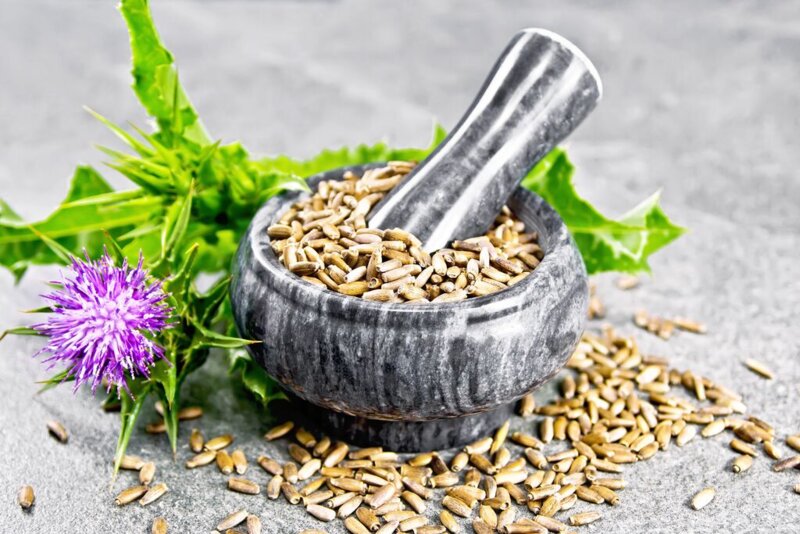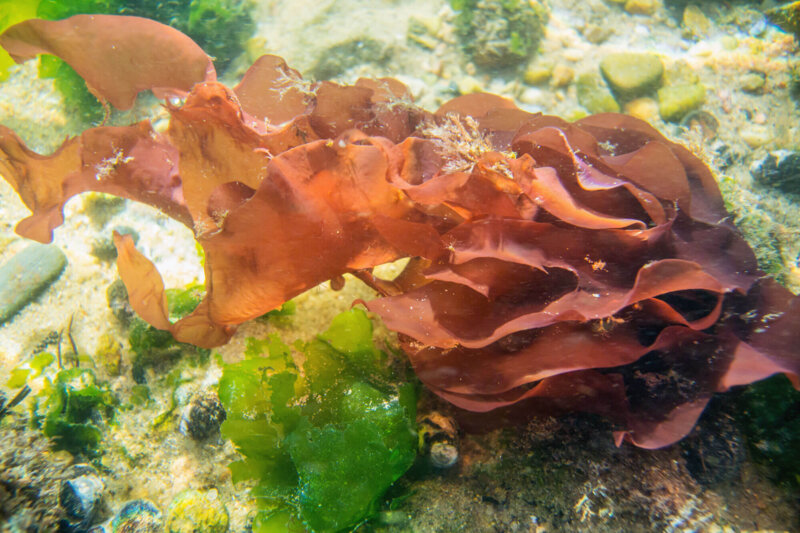Bitter is one of the five basic flavours, along with sweet, sour, salty and umami (2). Umami is less well known, means "delicious" in Japanese and describes a meaty flavour (2; 3). We owe the ability to perceive the different types of flavour to the taste receptors located on the tongue and in the mouth (2).
What are bitter substances?
Bitter substances are very different chemical compounds that do not have a standardised structure. The only thing they have in common is their bitter flavour. In nature, they are found in many vegetables and medicinal herbs and protect the plant from predators. Typical natural bitter substances are, for example, secondary plant substances and amino acids (1).
Why do we avoid bitter foods?
Most people are not particularly fond of bitter foods. This natural aversion is innate: even newborn babies prefer sweet foods to bitter ones. This is our body's defence mechanism to protect itself from potentially toxic substances. This is because most toxic substances found in nature taste bitter (1). Sweet, on the other hand, is considered a "safety flavour" because there are no naturally occurring toxins that taste sweet. Instead, we associate sweetness with fast and good sources of energy.
Interestingly, only a single receptor is responsible for the perception of sweet and sour flavours on our tongue. For bitter, on the other hand, there are 25 receptors (4). We therefore perceive bitter much more strongly than sweet, for example. These 25 receptors can recognise tens of thousands of different bitter substances (5) - a sophisticated protective system against potentially toxic substances. But not everyone perceives bitterness in the same way. Scientists have discovered that how bitter we perceive something depends on our genes (6).
In the course of our lives, our innate rejection of bitter flavours changes as a result of our experiences and we are able to become accustomed to bitter tastes. Nevertheless, bitter flavours have gradually been bred out of vegetables in recent decades. As a result, we have become accustomed to milder flavours. The good news is that we can also get used to bitter flavours again (1).
Why bitter substances?
But why should we get used to bitter flavours? Bitters are currently experiencing a real comeback. And rightly so, as they have a number of positive effects on our health:
Bitter substances ensure that the flow of saliva is stimulated and more stomach acid is produced. They therefore aid digestion and make food more digestible (1). They also stimulate the function of the liver and gallbladder. As a result, the liver produces more bile, which in turn stimulates fat digestion and helps the liver to detoxify (7). Bitter substances also have a positive effect on intestinal activity and can thus facilitate the absorption of nutrients (8).
New studies suggest that bitter substances can stimulate the production of insulin in the pancreas. They thus ensure that the blood sugar level, which rises after eating, falls again more quickly and thus contribute to better blood sugar regulation (9; 10).
Bitter substances can also support weight loss. In contrast to sweet or salty foods, which make you crave more, bitter substances have an appetite-suppressing effect. By docking onto intestinal cells, they release a hormone produced by the body that signals to the body that it is full (9). Bitter substances can also reduce cravings for sweets.
Many bitter substances also have antioxidant properties and are able to activate the immune system (8; 11).
New findings also show that bitter receptors are not only found in the mouth, but also in many other body tissues. Researchers have been able to detect them in the digestive tract, lungs, immune cells, skin, heart and even brain cells (4; 12). Exactly what functions they have there is still largely unclear. However, it is certain that they are an important component of the innate immune system (4).
Natural bitter substances
Bitter substances are found in many fruits and vegetables, as well as in numerous medicinal plants. In herbal medicine, bitter-tasting plants that have health benefits are known as amara (Latin for bitter) (1). Amara have been an important part of naturopathy since ancient times. They are categorised according to their properties (1; 11):
-
Amara pura (pure bitters): Pure bitter remedies are, for example, yellow gentian, artichoke, dandelion root and centaury.
-
Amara aromatica (bittering agents and essential oils): In addition to bitter substances, plants in this group also contain essential oils, such as milk thistle, sage, yarrow, angelica root, hop cones and wormwood.
-
Amara acria (bitter remedy with pungent substances): These medicinal plants contain bitter and pungent substances, such as ginger and turmeric.
-
Amara mucilaginosa (bittering agent with mucilage): This includes plants that contain bitter substances and mucilage, for example Iceland moss.
-
Amara salina (high-salt bitters): This group includes bitter remedies rich in salt, such as dandelion root and dandelion herb.
-
Amara astringentia (astringent bitters): In addition to astringent bitter substances, these plants also contain tannins and tannins, such as cinchona bark.
Many well-known medicinal plants contain bitter substances that have liver-protecting, choleretic, digestive, appetite-stimulating and numerous other effects on health. These include, among others:











